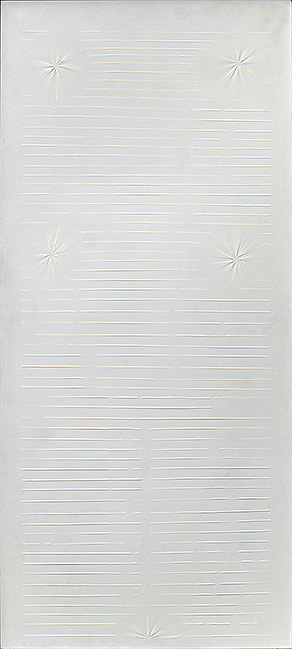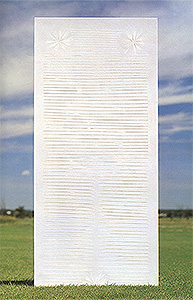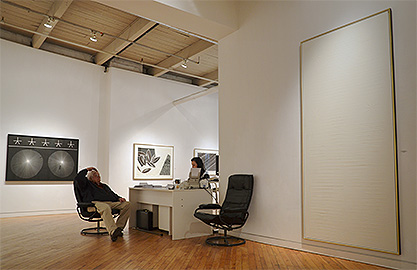


If you studied art in the 1940's and 50's you obtained a degree in Art and Archeology. That combination reflects the importance of the continuity, not of culture, but of the essential human spirit that is expressed in art. At the age of 21, this sensibility got into Ron Bloore in a way that informs all his mature work. This training in connecting to the meanings of artworks of distant civilizations, ancient and primitive cultures, helped him understand the meanderings of our own Western art history. And he was also critically unflustered by all the proclaimed supposed advancements in contemporary art.
This is why, in the late '60's when the director of the National Gallery of Canada could not undertake nor cancel a tour he had arranged to visit the peoples of Canada's north he asked Bloore if he would go in his stead. It was, Ron knew, the chance of a lifetime and his first wondrous trip to the arctic. After the extensive and intensive tour Bloore produced many official reports and scholarly writings, book contributions, reviews and magazine articles, including a long feature article in a large special issue of artscanada devoted to "The Eskimo World" (Dec.'71-Jan.'72), all pleading for a civilized respect the culture could, of course, never receive.
The Dorset Floating Bear series is named after the iconic bear image that pervaded the lives of the Dorset people. In true Bloore fashion, and out of respect for the sacredness of the Dorset people's relation to the bear image, there are no bear shapes in these paintings. Having said that, the scale and proportions of these works is obviously chosen to invoke in the non-Dorset viewer that same category of awe. Further experiential allusions to a kind of personality of place, and an intimacy with it, are somehow conveyed in the rhythms of the plain and poetic painted forms. Each long line is like the echo at the edge of earshot of a story lived but never told.
At the far right, is a superb photo by the legendary photographer Eberhart Otto. Otto had accompanied Bloore on the trip to Baffin Island for artscanada magazine and was, according to the painter, the only man who could shoot his works properly. It is the two star Bear that hung in the widely travelled show "Ronald Bloore, Sixteen Years, 1958-74." This image was reproduced in colour in the catalogue - the only colour image in it - and in artscanada magazine. To take the shot they floated the work out on the grass in the field beside Stong House which served as Bloore's studio on the York University campus from 1966 to '85. It presents the painting as a sculpture, which of course it is, and reminds us of the many implications of that aspect of Bloore's approach - the fact that these oil paint surfaces are carved with hand tools and sanded by machine.

The three known Dorset Floating Bears (all reproduced here) are not numbered and not even all inscribed. We must understand this as a sign of the craftsman's respect for the works themselves: an aversion to tainting their totemic effect with claims for personal credit. It is a recognition of the Bear's transcendance of the abyss of individuality. There are only two Bears with four an a half star shapes. The third, with two and a half star shapes, which starred in Ted Fraser's Sixteen Years catalogue is now in the provincial Art Gallery of Ontario, though that gallery did not host a stop of the exhibition.
At the lower right is a photo by Bloore's last studio assistant. Ron said a good photo needs a foreground, a middle ground and a background and they must all be compelling and reward attention. Three Bloore inkworks hang in the background, our current Dorset Floating Bear floats at the right, and Ron's colleague and good friend, sculptor Don Bonham relaxes in the middle. Compositionally, all lines lead to the back corner which is lit from the right implying an unknowable but very positive future inspiring, perhaps, the artist's confident repose.
<
^
>
|